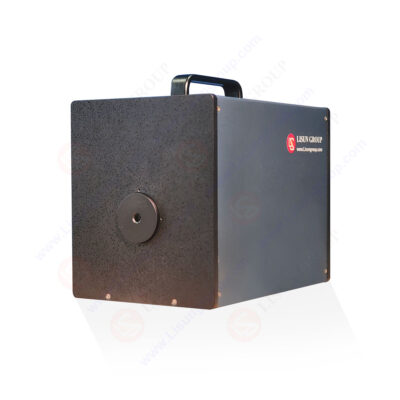

With the rapid advancement of digital technology and information systems, computers have become an integral part of both our work and personal lives. While computers offer significant convenience, they have also led to an increase in eye strain and visual impairments. As a result, protecting eye health has become a major concern. The primary concern regarding computer-induced eye strain is blue light exposure. Therefore, blue Retinal Blue Light Hazard Tester is essential for safeguarding eye health.
What is Blue Light?
Blue light refers to light waves with wavelengths primarily between 400nm and 500nm, within the visible light spectrum of 380nm to 760nm. For industry purposes, blue light is often defined as visible light in the range of 400nm to 500nm. To prevent blue light damage, blue light testers assess the light blocking performance at 400nm and 460nm wavelengths.
Impact of Blue Light on the Eyes
Prolonged exposure to blue light can cause chronic damage to the retina. Scientific studies have shown that mice exposed to blue light exhibited thinning of the retinal pigment epithelium and oxidative apoptosis of photoreceptors (cones and rods). This evidence suggests that long-term exposure to blue light can significantly affect human retinal health, particularly in infants and adolescents whose lenses are still developing and are more susceptible to blue light damage.
Other Effects of Blue Light on the Body
In addition to its impact on eye health, blue light can affect the secretion of melatonin, leading to what is known as the “dawn effect.” Research confirms that blue light, especially around 450nm, has the strongest suppressive effect on melatonin production during the night. Blue light’s shorter wavelength leads to increased scattering in the air, causing glare and further affecting visual health.
Protective Measures:
To effectively guard against blue light, various blue light blocking glasses and screen protectors are available on the market. These products filter specific blue light wavelengths to minimize eye damage. Moreover, using blue light testers to evaluate the performance of these products ensures their effectiveness. Additionally, reducing prolonged use of electronic devices and increasing break times can help protect vision.
Introduction to Retinal Blue Light Hazard Testers
With growing concern over blue light hazards in fields like ophthalmology, eyewear, and LED technology, there has been an increase in blue light protection products. However, some vendors exaggerate the effectiveness of blue light glasses, leading to a need for reliable blue light testers to verify the performance of such products.
EN62471-P_Portable Retinal Blue Light Hazard Tester
The Retinal Blue Light Hazard Tester is a portable device developed from laboratory photobiological safety testing systems. It is designed to be portable, user-friendly, and applicable across various scenarios. The tester complies with standards such as IEC/EN 62471:2008 and IEC 62471-7:2023 and can measure the following parameters:
• Effective Radiant Intensity of Retinal Blue Light Hazard
• Blue Light Hazard Level
• Retinal Blue Light Hazard Coefficient (KB, V)
• Spectral Radiant Intensity Distribution Curve
• Blue Light Weighted Radiant Intensity Ratio (BR)
• Effective Radiant Intensity of Retinal Thermal Hazard
• Apparent Light Source Edge Parameters
Key Features:
• Simulated Human Eye Optics Design: Features a 7mm entrance pupil diameter for dual optical path testing, allowing for accurate measurement of radiant intensity distribution and spectral radiant intensity.
• Wide Wavelength Range Spectral Measurement: Provides measurements from 300nm to 1050nm, covering retinal blue light hazard (300nm to 700nm) and partially covering retinal thermal hazard (380nm to 1400nm).
• Ultra-Wide and Fast Spectral Measurement: High-speed USB communication with an integration time as short as 11.4 microseconds and the capability to measure over 1000k cd/m².
• Built-in Electric Light Chopper: Facilitates zero calibration and improves measurement accuracy.
• Program-Controlled Measurement Distance Adjustment: Enhances the convenience of measurement operations.
Conclusion:
In today’s digital age, the widespread use of computers and electronic devices inevitably increases the exposure to blue light. By employing blue light protection products and testing devices, along with managing screen time effectively, we can significantly reduce the risks associated with blue light exposure. Starting with blue light testing is essential for ensuring eye health and enjoying the benefits of technology. https://www.lisungroup.com/news/technology-news/the-crucial-role-of-retinal-blue-light-hazard-testers-in-everyday-life.html
.jpg)
Comments
Post a Comment